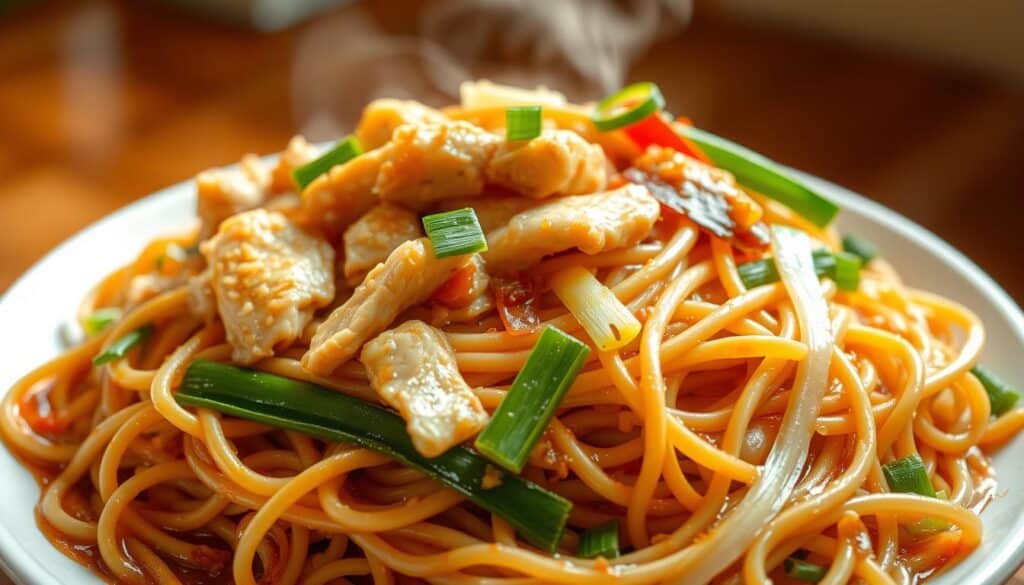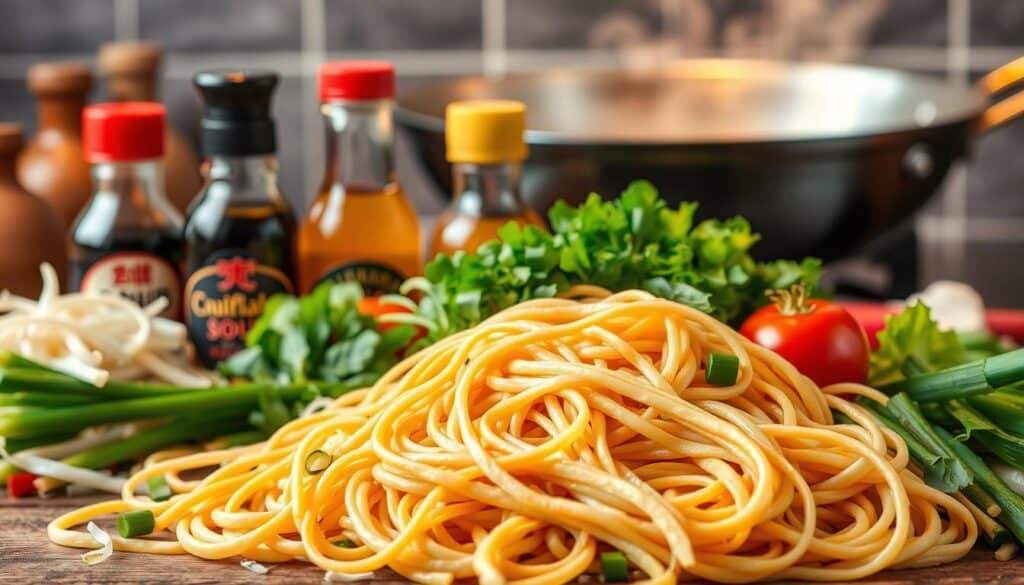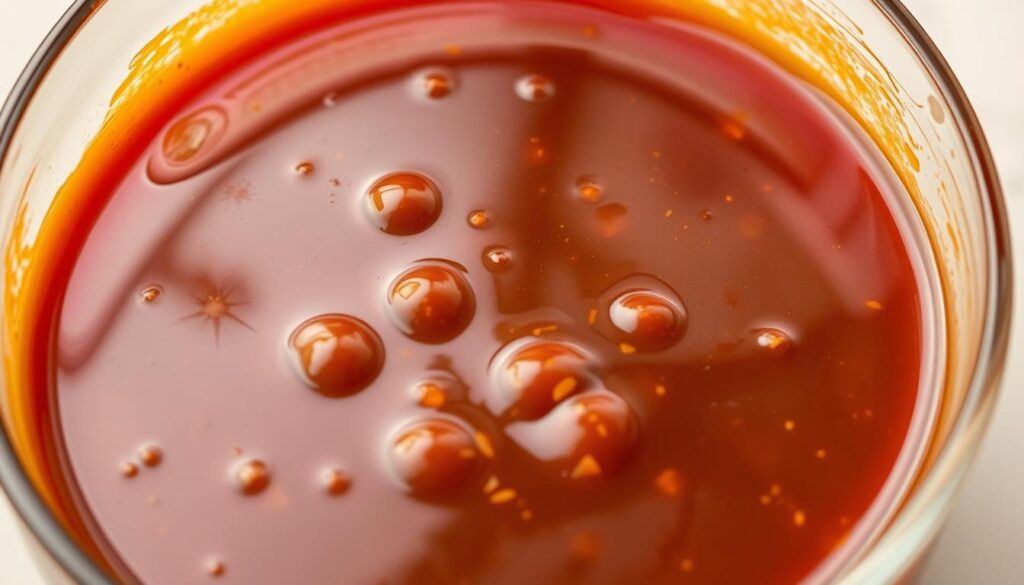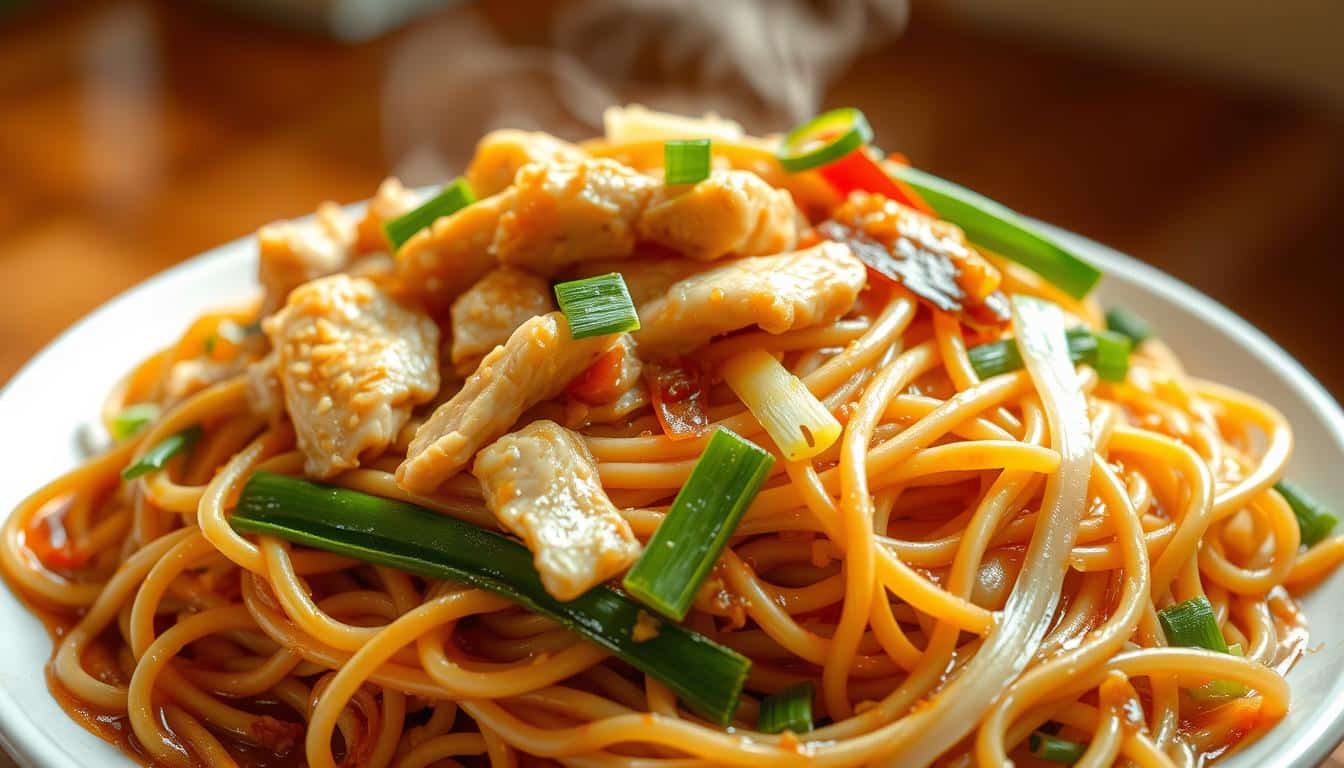There’s something special about a steaming plate of Chinese Noodles chow mein that never fails to hit the spot. For me, it’s more than just a meal—it’s a trip back to those cozy nights when a simple, flavorful dish could make everything right. This classic Chinese noodle dish has a way of bringing people together, and I’m excited to share how you can create it in the comfort of your own kitchen.
Thank you for reading this post, don't forget to subscribe!In this article, I’ll guide you through the process of making a delicious and easy Chow Mein recipe that’s perfect for any day of the week. Whether you’re a fan of stir-fried noodles or looking for a quick, healthy meal, this recipe offers it all. The best part? It’s ready in just a few minutes, making it ideal for busy weeknights.

With fresh ingredients and a customizable approach, you can tailor this dish to your taste preferences. Plus, the sauce is a perfect balance of sweet and savory, giving it that authentic Chinese take-out flavor. Let’s dive into how you can make this mouthwatering dish at home with minimal effort and maximum flavor!
Key Takeaways
- Quick and easy recipe ready in minutes
- Customizable with your favorite vegetables
- Healthy and flavorful with fresh ingredients
- Perfect for weeknight meals
- Authentic Chinese take-out flavor at home
Introduction: Embracing the Flavor of Chinese Noodles chow mein
My love affair with Chow Mein began during family dinners at our local Chinese restaurant. Those crispy noodles and the medley of vegetables in a savory sauce created a flavor profile that captivated my taste buds. Over time, I realized that Chow Mein was more than just a meal—it was a culinary experience that brought comfort and joy to our gatherings.
A Personal Journey with This Dish
What makes Chow Mein special is its perfect balance of textures and flavors. The noodles, when cooked just right, have a delightful crunch that gives way to a soft interior. The sauce, a harmonious blend of sweet and savory notes, ties everything together. Each bite is a symphony of flavors, from the slight char of stir-fried vegetables to the umami of soy sauce.
I remember the first time I tried making Chow Mein at home. It was a revelation to see how a few simple ingredients could recreate the restaurant magic. The process of stir-frying—quick, precise, and full of energy—made cooking feel more like an art form than a chore.
What Makes Chow Mein Special?
Every ingredient in Chow Mein plays a vital role. Carrots add a pop of color and sweetness, while cabbage provides a refreshing crunch. The sauce, often a mix of soy sauce, oyster sauce, and a touch of sugar, is the backbone of the dish. It’s this balance that makes Chow Mein a standout choice for any meal.
Whether you’re using fresh vegetables from your garden or relying on pantry staples, Chow Mein adapts to what you have. This versatility is part of its charm. Plus, the cooking process is quick—just a few minutes in a hot wok or skillet, and you’re ready to serve.
For those looking to elevate their meal, I recommend trying the chicken in tomato sauce recipe. It pairs wonderfully with Chow Mein, adding a tangy and rich element to your dining experience.
Join me as I share my favorite Chow Mein recipe, a dish that has become a staple in my kitchen. With its rich flavors and adaptable ingredients, it’s a meal that will quickly become a family favorite.
Gathering Essential Ingredients and Kitchen Prep
Before diving into the recipe, it’s crucial to have all your ingredients ready. This ensures a smooth and enjoyable cooking experience.
Selecting Fresh Noodles & Vegetables
For the best results, choose fresh chow mein noodles. If unavailable, yakisoba noodles are a great alternative. Opt for crisp vegetables like cabbage and carrots, as they add a delightful texture to the dish.
Choosing the Right Protein
Your protein can vary based on preference. Chicken, tofu, or shrimp each complement the flavors uniquely. Prepare your protein by seasoning it lightly before cooking.
Organize your kitchen by setting aside prepped ingredients. This includes washed vegetables, measured sauces, and portioned proteins. Quality ingredients are key to achieving an authentic taste.
| Protein Option | Cooking Time | Benefits |
|---|---|---|
| Chicken | 5-7 minutes | Rich flavor, tender texture |
| Tofu | 3-5 minutes | Vegan-friendly, absorbs sauces well |
| Shrimp | 2-3 minutes | Quick cooking, adds seafood flavor |

With everything prepped and organized, you’re ready to start cooking. Remember, the key to a great chow mein is in the stir-fry technique and the balance of your sauce.
Chow mein: Step-by-Step Cooking Guide
Creating an authentic Chow Mein dish at home is easier than you think. With a few simple steps, you can achieve that restaurant-quality flavor and texture. Let’s break it down into manageable parts for a seamless cooking experience.
Sautéing Chicken and Vegetables
Start by heating a tablespoon of oil in a wok or large skillet over high heat. Add your protein of choice—chicken works beautifully—and cook until golden brown. Remove it from the pan and set it aside. Next, add more oil if needed, then toss in thinly sliced carrots, cabbage, and celery. Stir-fry these vegetables for about a minute to maintain their crunch. For added depth, briefly sauté minced garlic and ginger—just long enough to release their aroma without burning.
Perfecting the Stir-Fry Technique
Add the cooked noodles to the pan, stirring them into the vegetables. Pour in your prepared sauce, ensuring the noodles absorb the flavors evenly. Return the chicken and vegetables to the pan, tossing everything together for a final minute. This technique ensures each bite is packed with flavor and texture. For a finishing touch, try pairing it with a side of Boursin chicken for a well-rounded meal.
Crafting the Best Homemade Chow Mein Sauce
The secret to a memorable Chow Mein lies in its sauce—a perfect harmony of sweet, savory, and tangy notes. This sauce is the backbone of the dish, transforming simple ingredients into a flavorful masterpiece. Whether you’re a novice cook or an experienced chef, mastering this sauce will elevate your Chow Mein to new heights.
Mixing and Balancing Flavors
To create an authentic sauce, start by combining key ingredients like oyster sauce, soy sauce, and a hint of sesame oil. These elements form the foundation of the sauce, providing depth and umami. Add a tablespoon of cornstarch to thicken the mixture, ensuring it coats the noodles and vegetables evenly. A touch of sugar balances the savory flavors, while a splash of rice vinegar adds a subtle tang.
Adjusting Seasonings to Suit Your Taste
Whisk the sauce thoroughly in a bowl to eliminate any lumps. Taste as you go, adjusting the seasoning gradually. For a sweeter profile, add a bit more sugar. If it’s too thick, a dash of water will thin it out. This approach allows you to tailor the sauce to your preferences, making each dish uniquely yours.

Achieving the right consistency is crucial. The sauce should be thick enough to cling to the noodles but still pour smoothly. With these simple steps, you’ll have a delicious, restaurant-quality sauce ready in just a few minutes. Store any leftovers in the fridge for up to a week or freeze for later use.
Exploring Variations and Customizing Your Dish
One of the joys of cooking is the freedom to experiment and make a dish truly your own. Whether you’re a vegetarian, vegan, or simply looking to mix things up, Chow Mein offers endless possibilities for customization.
Vegetarian and Vegan Alternatives
For a vegetarian or vegan version, tofu or tempeh makes an excellent protein substitute. These options absorb the flavors of the sauce beautifully and add a satisfying texture. Simply marinate and stir-fry them before combining with your noodles and vegetables. You can also set aside some ingredients to add fresh elements at the end, ensuring a vibrant mix of textures.
Experimenting with Noodle Types
While traditional Chow Mein noodles are a staple, don’t hesitate to try alternatives like yakisoba or rice noodles for a different twist. Each type brings its own unique texture and flavor to the dish. For instance, yakisoba noodles add a slightly chewier bite, while rice noodles provide a lighter, more delicate feel.
Feel free to get creative with your vegetables as well. Bell peppers, broccoli, and bok choy are great additions that add color and texture. Adjusting the amount of soy sauce or sesame oil can also create a variety of flavor profiles. The key is to have fun and tailor the recipe to your preferences!
Serving Suggestions, Nutritional Facts, and Final Touches
The final touches can make your Chow Mein truly special. Whether it’s through creative garnishes or understanding the dish’s nutritional profile, these elements help create a balanced and appealing meal.
Garnishing Ideas for a Stir-Fry Masterpiece
Add a fresh and vibrant look to your Chow Mein with green onions. Simply slice them thinly and sprinkle over the top. A drizzle of sesame oil or a bit more sauce can tie the flavors together beautifully. For added texture, try tossing in some bean sprouts or sesame seeds.
Understanding the Nutritional Breakdown
Each serving of this Chow Mein recipe offers a nutrient-rich meal. With approximately 325 calories per serving, it provides 8g of protein and 59g of carbs, making it a balanced option. The dish is also low in fat, with only 7g per serving, and includes essential vitamins like A and C.
- Calories per serving: 325 kcal
- Protein: 8g
- Carbohydrates: 59g
- Fat: 7g
- Fiber: 5g
For a complete meal, serve your Chow Mein hot, straight from the pan. You can also set aside some extra ingredients like soy sauce or chili flakes on the side for customization. Experiment with final touches that reflect your personal style, whether it’s a sprinkle of herbs or an extra drizzle of sauce.
Want to try this Chow Mein recipe at home? Visit our detailed guide here: Chow Mein Recipe for a quick and delicious meal.
Conclusion
As we wrap up this journey through the world of Chow Mein, I hope you’re as excited as I am to get cooking! This recipe is more than just a meal—it’s a versatile canvas waiting for your personal touch. Whether you’re a busy parent or an adventurous cook, Chow Mein offers a quick, flavorful solution for any day.
Remember, the key to a great dish lies in the details—fresh vegetables, a perfectly balanced sauce, and a sizzling hot wok. Don’t hesitate to experiment with different proteins or noodle types to make it your own. I’d love to see your creations—share them with me on Instagram or Facebook!
For those curious about other noodle dishes, check out our guide on Chow Mein vs. Lo Mein to explore more culinary possibilities. Every stir-fry tells a story, and I’m confident yours will be nothing short of delicious. Happy cooking!
FAQ
Can I use different types of noodles for Chow Mein?
Yes, you can experiment with various noodles, but ensure they’re suitable for stir-frying to maintain texture.
How do I store leftover Chow Mein?
Let it cool, then store in an airtight container in the fridge for up to 3 days. Reheat with a bit of water or oil.
Is there a way to make Chow Mein more authentic?
Use traditional ingredients like sesame oil and soy sauce, and ensure high heat for stir-frying to get that wok-seared flavor.
Can I add other vegetables to customize the dish?
Absolutely! Feel free to add your favorite vegetables like broccoli, snap peas, or bell peppers to make it your own.
There are no reviews yet. Be the first one to write one.

